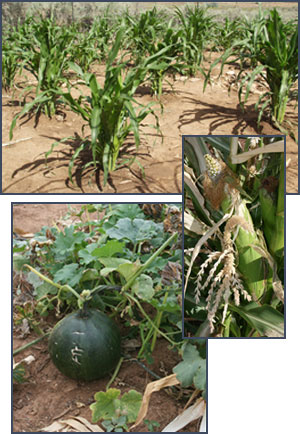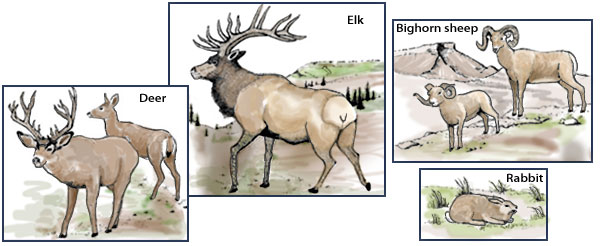Peoples of the Mesa Verde Region
Basketmaker II: 500 B.C. to A.D. 500Food

Corn and squash were dietary staples during the Basketmaker II period. Dependence on corn and an increase in agricultural production were probably the two most important developments of the Basketmaker II period. Corn and squash first appeared on the Colorado Plateau about 1000 to 2000 B.C. During the late Archaic period, these domesticated plants supplemented a diet that still consisted mostly of wild plants and animals. But by the Basketmaker II period, people were getting most of their calories from domesticated plants, especially corn. Once dried, corn could be ground into a fine meal or stored for future use. 
Deer, elk, bighorn sheep, and rabbit were important sources of protein. Of course, wild plants and animals continued to be eaten throughout the Basketmaker II period, even as people's reliance on domesticated plant foods grew. The leaves of some wild plants, such as goosefoot and amaranth, were probably eaten as "greens." Ricegrass seeds and pinyon nuts may have been ground into meal. Deer, elk, bighorn sheep, rabbits, and rodents were still important sources of meat protein, and wild turkey was probably eaten as well.
How do archaeologists know that corn was the major component of the diet of Basketmaker II peoples? |
|
Acknowledgments | Illustration credits | To borrow, cite, or request permission | Please take our survey! Title page for Peoples of the Mesa Verde Region |
|
 DONATE TODAY
DONATE TODAY
